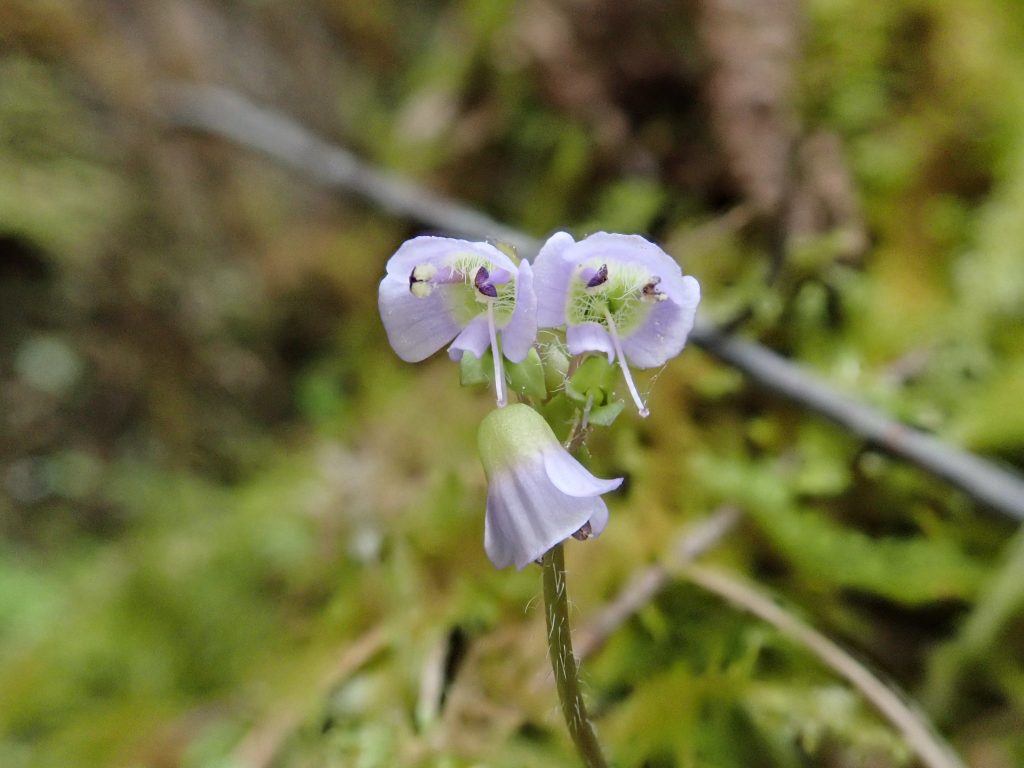
Last winter while exploring The Cliff I happened upon some large toothed leaves that looked familiar and somewhat saxifrage-ish. It never occurred to me that they might be snow queen until I found their beautiful little flowers this spring. And even then it wasn’t until I found the second patch, down low enough on the Cliff that I could lean in for a closer look and a photo, that I made the connection. The flowers themselves are small and easily lost in the surrounding vegetation. And I probably passed others before these caught my eye.
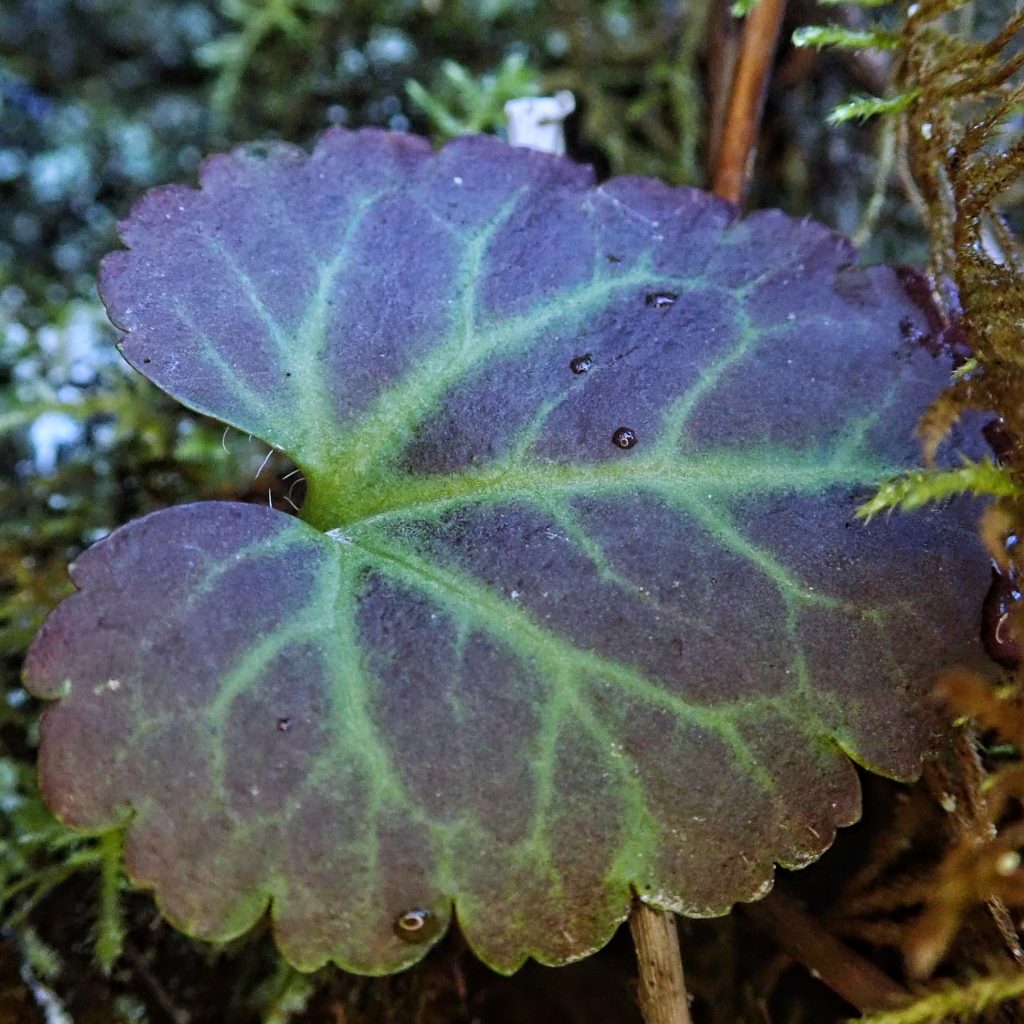
In my defense the distinctive flowers themselves (that large purple anther!) and the clustered inflorescence had always seemed so definitive that I hadn’t payed much attention to the foliage. For one thing the petiole is so long and lax that I don’t even think I realized it was connected to the flower stalk of these little gems. This error was probably strengthened by the incongruity of how large the leaves are. Three complete flower clusters probably wouldn’t cover one. But I’ll know these leaves the next time I see them sans inflorescence!
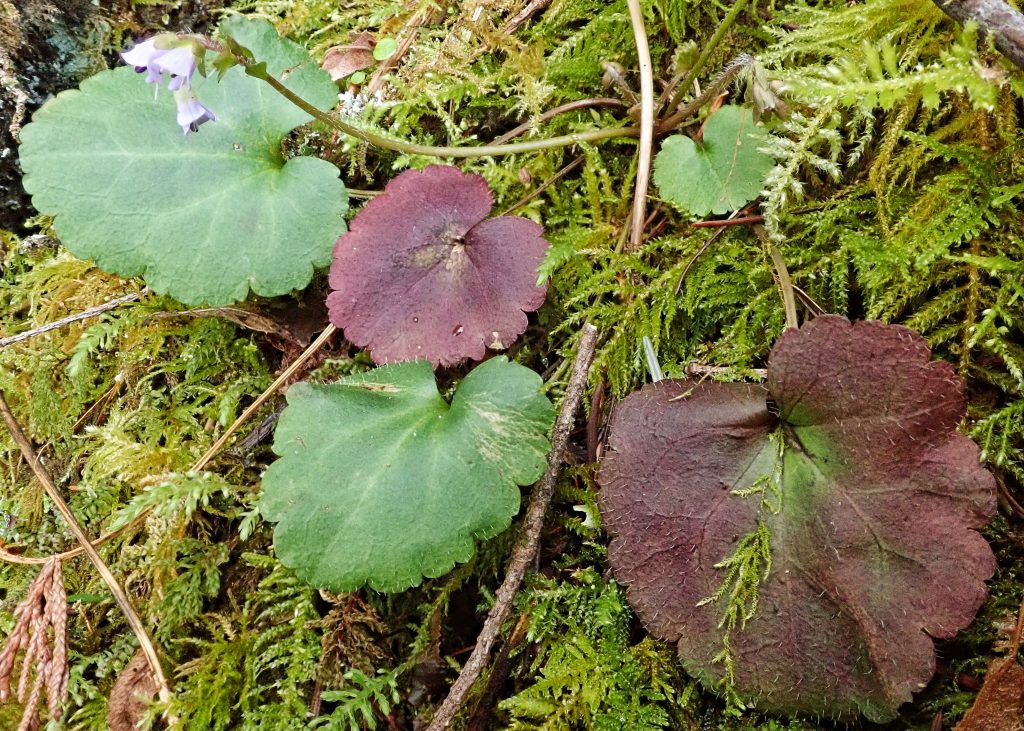
These welcome early bloomers were historically in the family Scrophulariaceae (figworts), but revisions based on morphology and molecular data in the early 21st century placed them in Plantaginaceae. And revisions are ongoing, so that eventually they may end up back in the genus Veronica, where they started out over 200 years ago, when they were first classified from among the specimens of Lewis and Clark’s expedition.
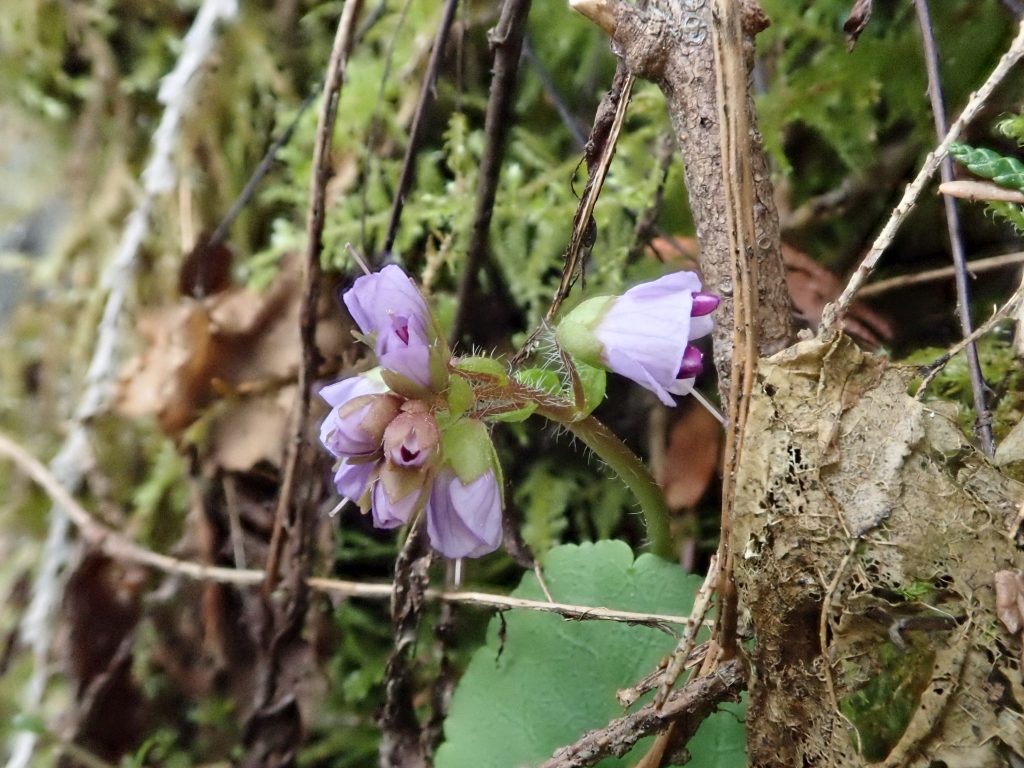
Description– Low plant with weak and mostly prone stems; leaves large, toothed, kidney to heart shaped, hairy, often lighter near the veins; flowers small, bell shaped, blue to purple, in small clusters at the stem tip, with a large purplish anther
Similar species–Synthyris missurica inflorescence is an extensive raceme; S. schizantha has flower petals (corolla lobes) deeply and multiply dissected ; all other Synthyris leaves deeply dissected, or lack petaled flowers.
Habitat-Moist to mesic coniferous and mixed forests up to 5,000’.
Range-Pacific Coast endemic; west of the Cascades in our region, as well as the Columbia River Gorge.
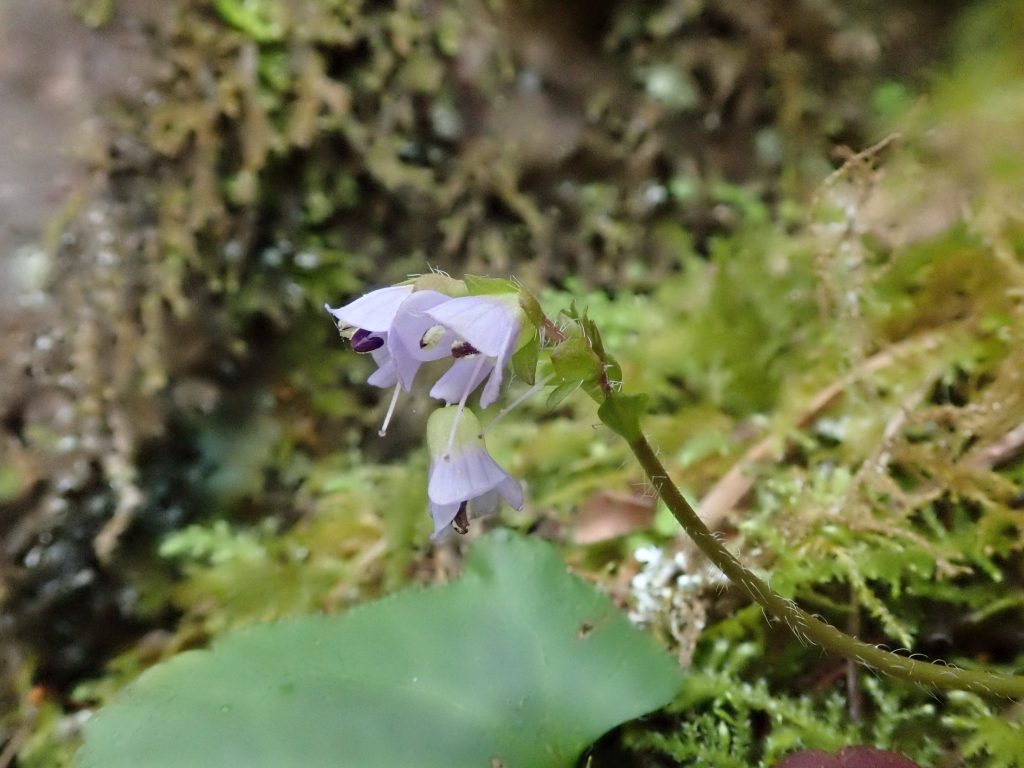
Reproductive timing– Blooms as early as February in low elevations; blooms immediately after snow melt at higher locations
Eaten by– Being an early bloomer it is an important nectar and pollen source for many early emerging wasps, bees, flies, and other pollinators.
Etymology of names–Synthyris is from Greek and means ‘united valves’, which refers to the valves of the fruit adhering to the placental axis. The specific epithet reniformis references the vaguely kidney shaped leaves of this plant.
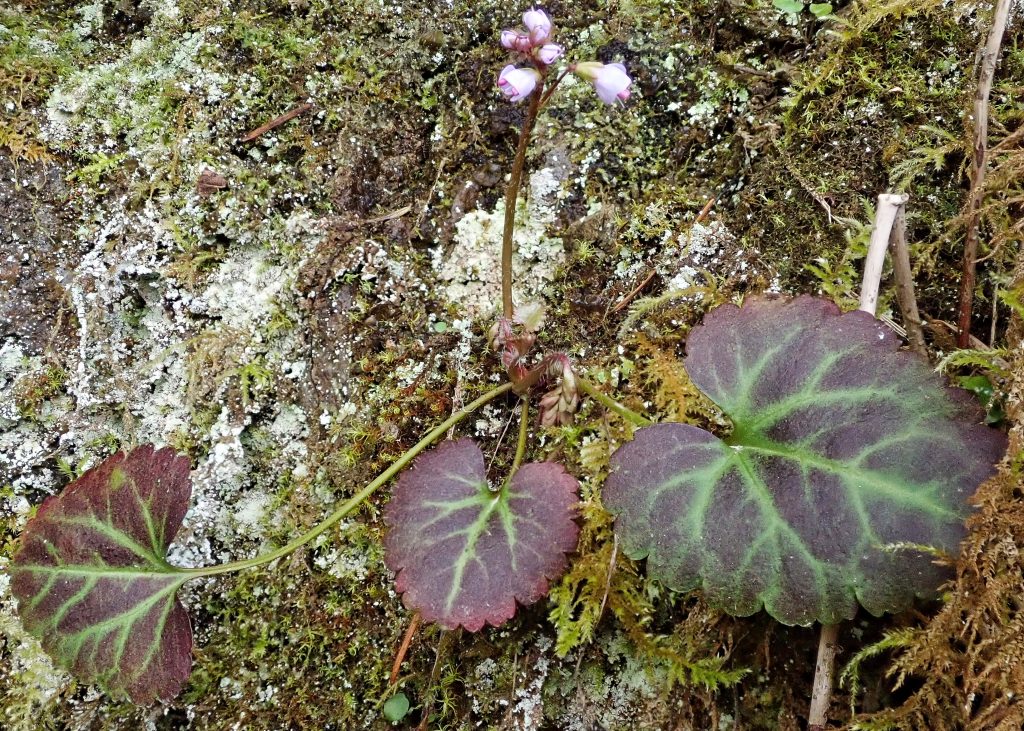
Synthyris reniformis | Snow Queen | Wildflowers of the Pacific Northwest
http://beta.floranorthamerica.org/Synthyris_reniformis
http://science.halleyhosting.com/nature/gorge/5petal/figwort/synthyris/snow.htm
https://nwwildflowers.wordpress.com/2015/03/08/snow-queen-synthyris-reniformis/amp/
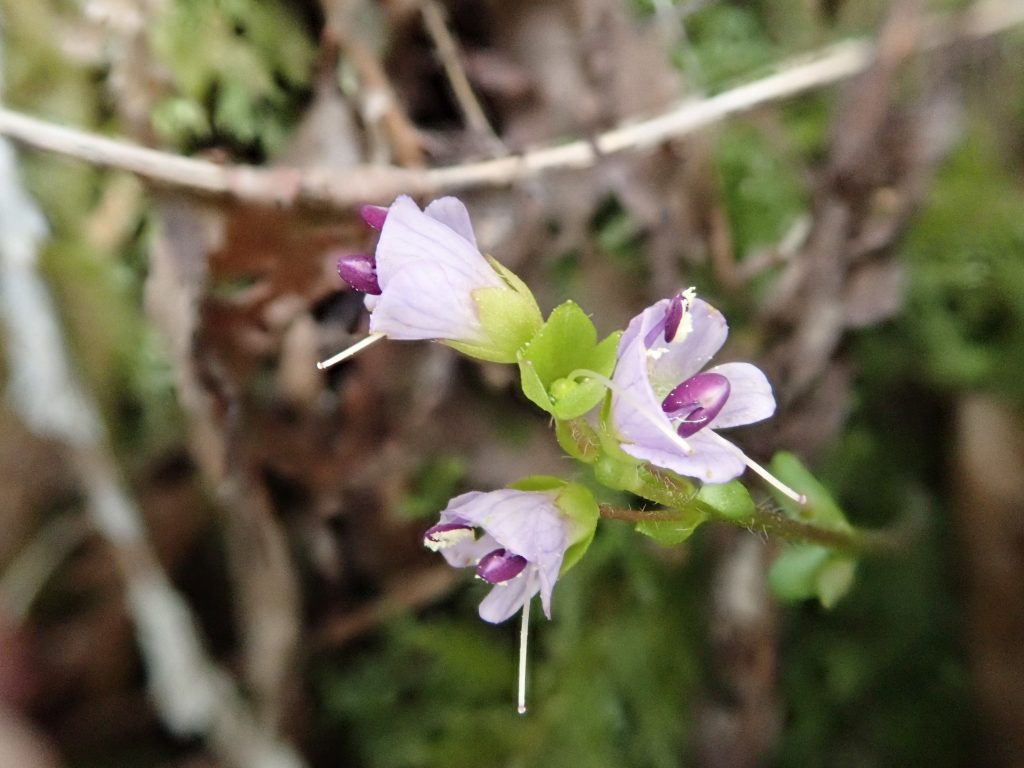
The flowers are beautiful, but just the leaves are very handsome on their own!
So pretty! Leaves are distinctive. Cool if they end up back where they started with L&C! ☺️
Does synthrys reniformis aka snow queen have medical or toxic properties?
Not that I could discover, Asante.